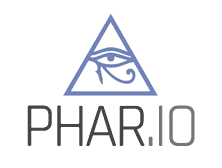The PHAR Installation and Verification Environment (PHIVE)
Installation and verification of phar distributed PHP applications has never been this easy!
Adding all the required tools like PHPUnit, PHPMD and phpDox in their matching versions to a project used to be a lot of repetitive work: Started by finding the download URL, figuring out what the actually correct and matching version is followed by verifying the SHA1 and GPG signatures and making the archive executable. And of course you’d have to repeat this very thing for every tool needed.
Alternatively, you could have used composer. Only to clutter your project’s dependencies with the ones of your tools. And fight their potential dependency conflicts.
No more! Now you can rely on PHIVE to install and manage your project’s tooling needs without all the hassle and without cluttered dependencies!

